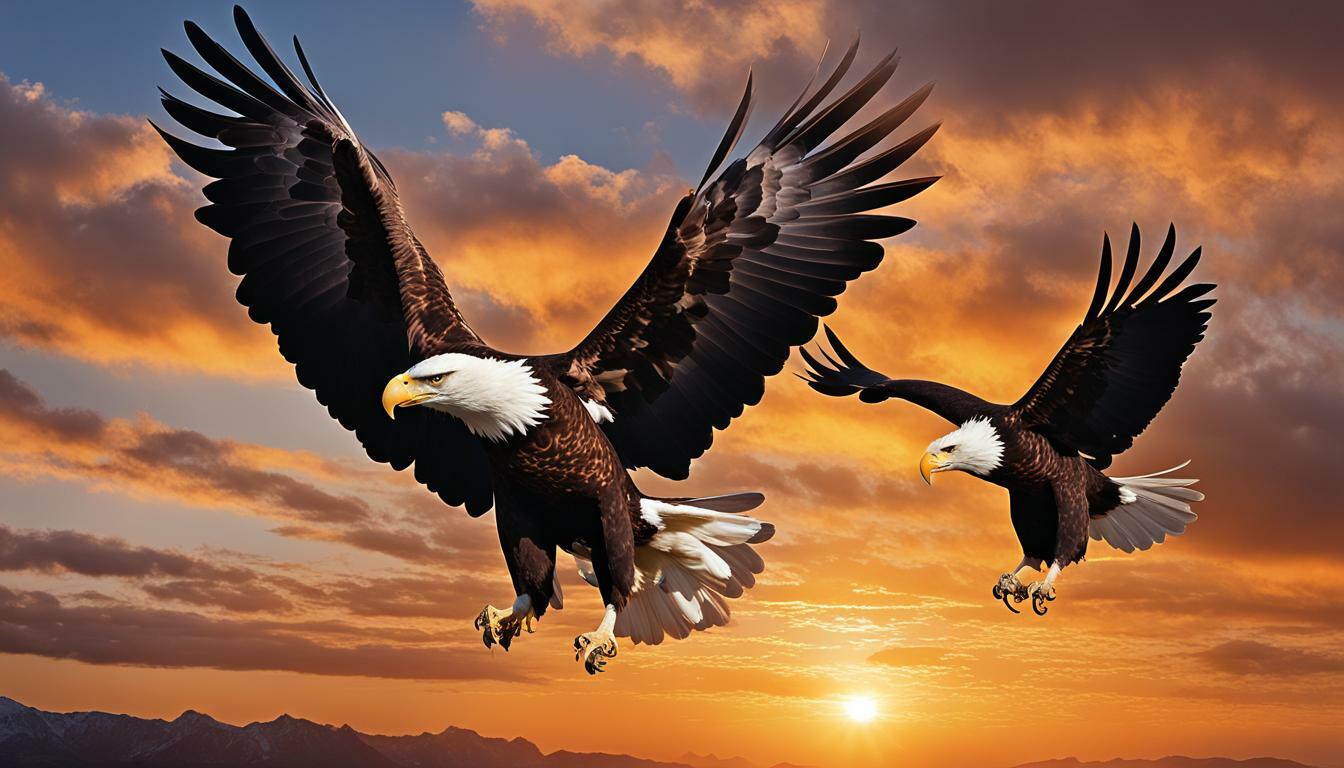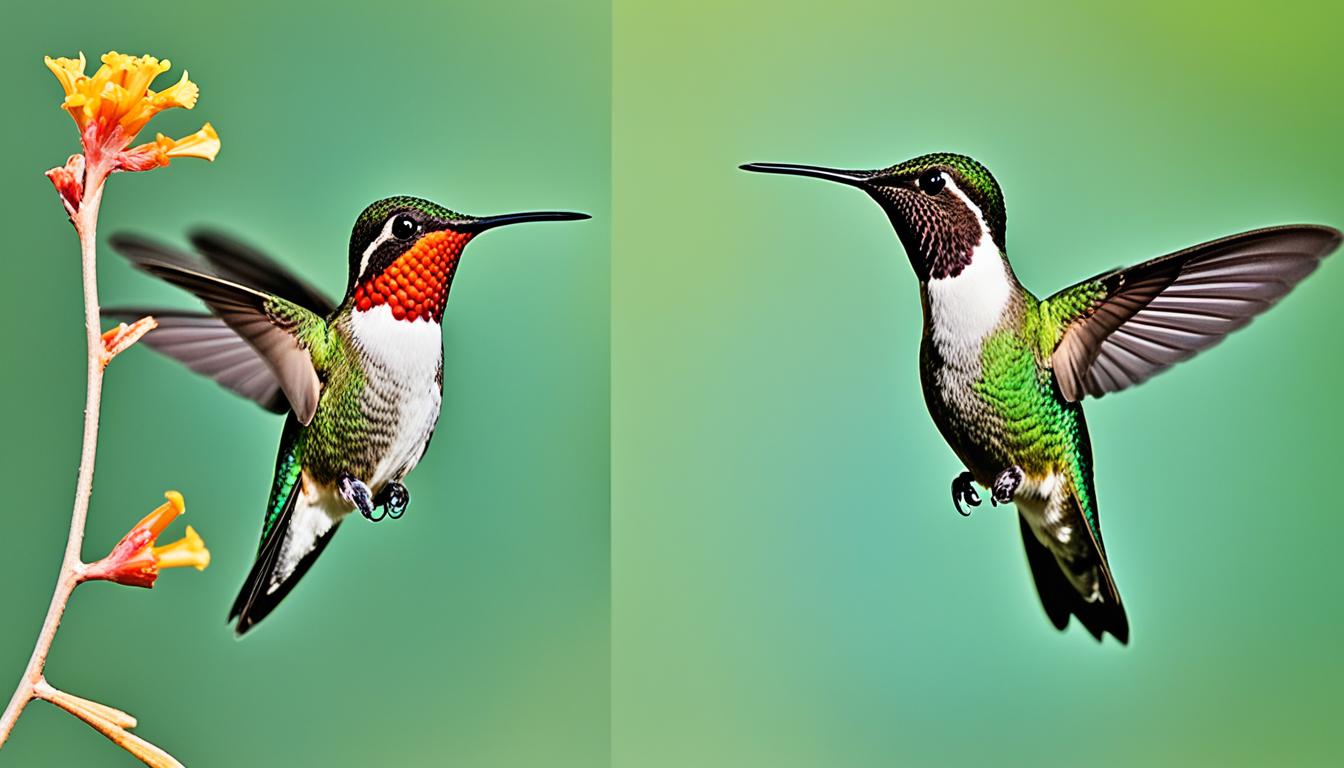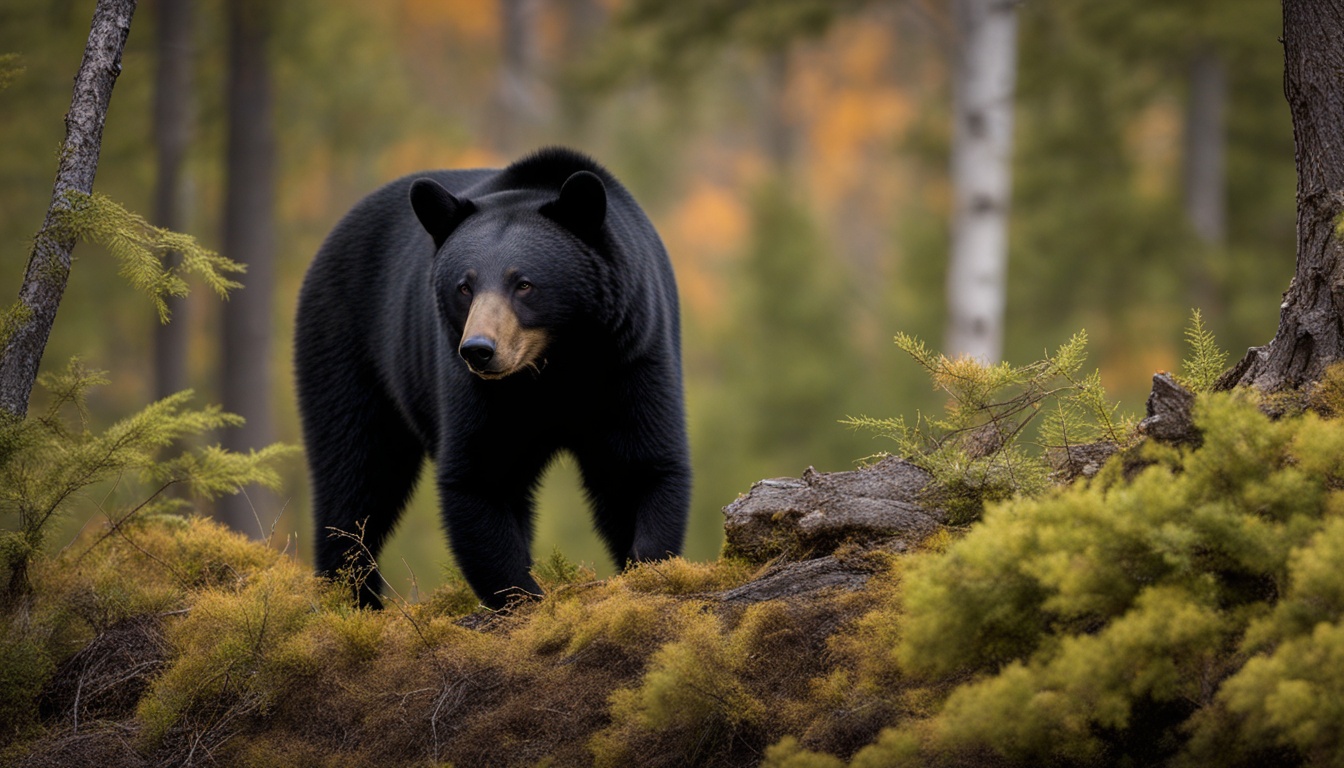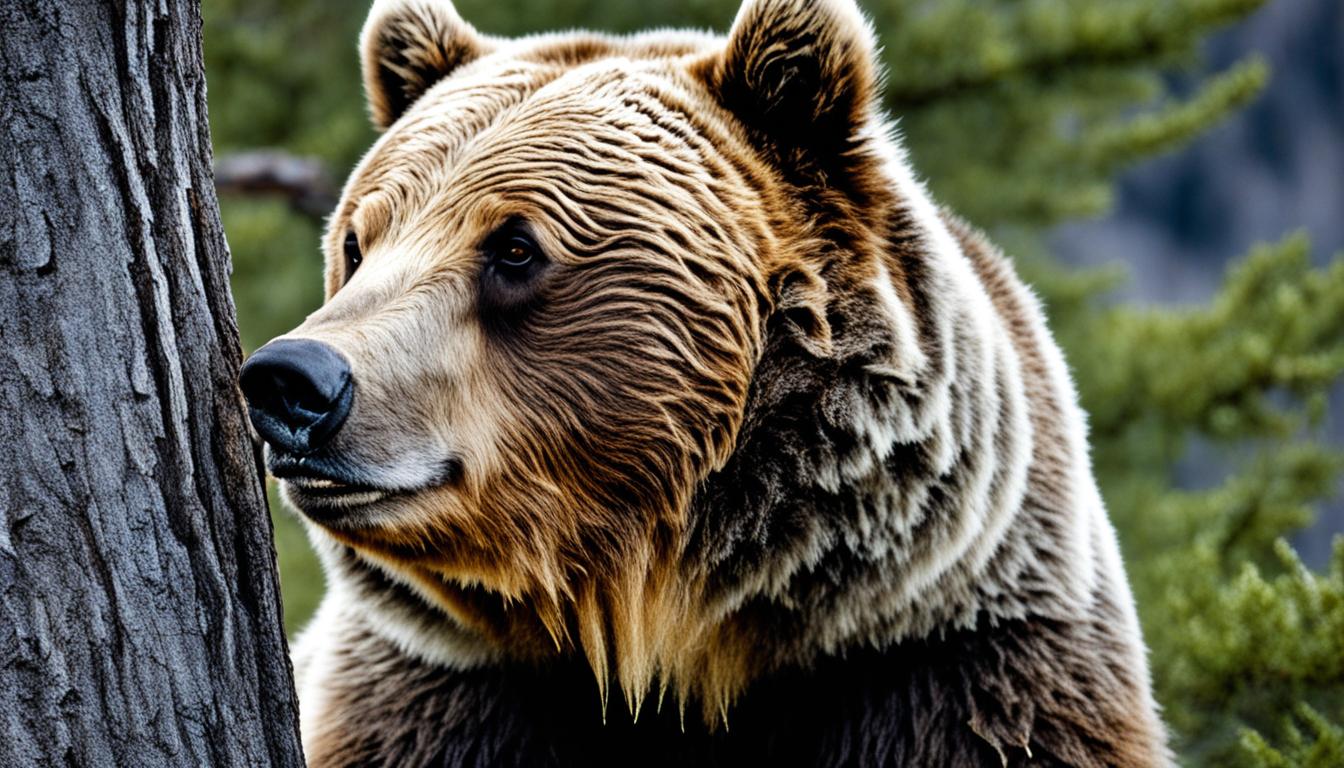If you’re a fan of birds, then you probably know how marvelous bald eagles are. These majestic creatures are not only the national symbol of the United States but also play a crucial role in maintaining the balance of ecosystems. But have you ever wondered if bald eagles fight each other? The truth might surprise you.
Key Takeaways:
- Bald eagles are territorial creatures and establish their territories for nesting and feeding.
- Factors like age, gender, breeding season, and competition for resources can trigger bald eagle fights.
- Bald eagle fights can lead to injuries and fatalities, and conservation efforts are critical to their survival.
Bald Eagle Aggression: Uncovering Their Territorial Behavior
When it comes to aggression, bald eagles are known for their territorial behavior. These birds of prey establish their territories and fiercely defend them against intruders. Territories are crucial to their survival as they provide ample food sources and nesting sites.
Typically, a bald eagle’s territory includes a body of water, such as a river or lake, and an adjacent area of forest or open land. They also prefer to have a clear line of sight to their surroundings, which allows them to spot potential threats from a distance.
| Establishing Territories | Defending Territories |
|---|---|
|
Bald eagles establish their territories through a complex series of aerial displays and vocalizations. These displays include soaring, diving, and talon grappling. Displays become more intense as the breeding season approaches. |
If an intruder enters their territory, bald eagles will first attempt to drive them away through aerial displays and vocalizations. If the intruder persists, bald eagles will engage in physical combat, using their talons to injure or kill the intruder. |
While bald eagles are territorial and aggressive, they still form strong pair bonds with their mates and can exhibit cooperative behavior when raising their young. It’s fascinating to watch these birds in action as they engage in complex rituals and behaviors that have been honed over thousands of years of evolution.
Bald Eagle Aggression: Uncovering Their Territorial Behavior
To understand bald eagle aggression better, it’s essential to look at the different patterns of aggression observed among these birds. Factors such as age, gender, and breeding season can influence their behavior and lead to varying levels of aggressiveness.
- Age: Younger eagles are more aggressive and prone to fights as they try to establish their own territories.
- Gender: Males are generally more aggressive than females and will fight to defend their territories and attract mates.
- Breeding Season: During the breeding season, bald eagles become more territorial and aggressive as they compete for nesting sites and mates.
Bald eagles engage in several types of aggression displays, including aerial displays, which involve flying and talon grappling, and ground displays, which involve posturing and vocalizations. These displays can escalate to physical combat when conflicts arise.
While bald eagles may seem intimidating in their aggressive behavior, it’s essential to remember that they play a vital role in the ecosystem. As apex predators, they help maintain the balance of various animal populations and keep other birds of prey in check. Understanding and preserving their behavior is crucial to the conservation of these majestic birds.
Understanding the Patterns of Bald Eagle Aggression
Bald eagles are known for their aggressive behavior, especially during the breeding season. However, their aggression patterns vary depending on various factors like age, gender, and environmental conditions.
Young bald eagles tend to be more aggressive than adults, as they are still learning to establish their territories and hunt for food. Male eagles are generally more aggressive than females, as they need to defend their territory and impress potential mates. During the breeding season, both male and female eagles become highly defensive of their nests, which can lead to confrontations with other eagles.
The availability of food also plays a crucial role in eagle aggression. When food is scarce, eagles are more likely to become aggressive towards each other. Bald eagles living in urban areas tend to be more aggressive due to competition for resources.
Additionally, eagles are more likely to become aggressive when their flights paths or nesting sites are disturbed by human activities such as logging, construction or other disturbances.
As with any animal behavior, there can be variations in aggression patterns among individual bald eagles. Some eagles are more aggressive than others, while some may show little or no aggression even under stressful conditions.
The Rituals of Bald Eagle Combat
When bald eagles engage in combat, they follow a series of fascinating rituals that are critical in establishing dominance. These rituals can include:
| Ritual | Description |
|---|---|
| Aerial Displays | While soaring through the air, bald eagles will perform stunt-like maneuvers to intimidate their opponents. These can include cartwheels, rolls, and dives. |
| Aggression Displays | Bald eagles will puff their feathers, stand tall, and make loud calls as a warning to their opponent. |
| Physical Combat | When all other forms of intimidation fail, bald eagles will engage in physical combat, using talons and beaks to attack their opponent. These fights can be violent and even deadly, although fatalities are relatively rare. |
These rituals play a critical role in the social hierarchy of bald eagles. The winner of the fight establishes dominance and claims the territory, while the loser is forced to retreat. In some cases, the defeated eagle will even leave the area entirely to avoid further conflict.
It is important to note that not all conflict among bald eagles leads to physical combat. In fact, many disputes are settled through aerial displays and aggression displays alone.
The Role of Bald Eagle Territories in Fights
One of the primary reasons for bald eagle fights is the defense of their territories. Bald eagles establish territories for mating, nesting, and hunting purposes, and they will defend their space vigorously.
Conflicts arise when two eagles’ territories overlap. Bald eagles are known to engage in aerial displays and aggression displays when they feel threatened. They will swoop down and attack their opponent, attempting to chase them out of their territory. These displays can be quite intimidating, with loud calls and swooping dives.
During physical combat, bald eagles use their sharp talons and beaks as weapons, aiming to injure or even kill their opponent. While most fights end without serious injuries, they can sometimes lead to fatalities.
It’s important to note that bald eagles will only fight over important resources like food, nesting sites, and mates. They do not engage in random acts of aggression, and most conflicts can be avoided by respecting their territories.
Factors That Trigger Bald Eagle Fights
As with many animals, competition for resources is a primary reason for bald eagle fights. When food, nesting sites, or potential mates are scarce, eagles are more likely to become aggressive towards one another. This is particularly true during breeding season, when males will fiercely defend their territory and potential mates from other males.
Age and gender also influence the likelihood of confrontations. Juvenile bald eagles are more likely to engage in fights as they learn to establish their own territory and learn to hunt for themselves. Adult male eagles are generally more aggressive than females, and will frequently engage in aerial displays to establish dominance.
The sight of two bald eagles locked together in mid-air combat is a truly staggering sight – a true test of strength and control that can last for several minutes.
Interestingly, bald eagle fights seldom result in serious injuries. While they use their sharp talons and beaks as weapons, eagles are able to pull their punches and avoid inflicting fatal wounds. Instead, the combat generally serves as a means of establishing dominance and resolving territorial disputes.
Human activity can also play a role in triggering bald eagle fights. Habitat destruction, hunting, and other activities that disrupt the natural balance of ecosystems can force eagles into closer proximity and lead to more frequent confrontations. As such, conservation efforts are crucial in protecting these majestic birds and ensuring their survival for generations to come.
The Consequences of Bald Eagle Aggression
While bald eagle fights can be a spectacular sight to witness, they also come with consequences. Bald eagles are powerful birds with strong beaks and sharp talons, meaning that fights between them can be dangerous. Injuries and even fatalities can occur during fights, particularly when eagles are competing for resources such as food, nesting sites, or mates.
Furthermore, the overall impact of bald eagle aggression on their population is a cause for concern. While they are no longer endangered, they remain a protected species, and their populations are still vulnerable, particularly in areas where habitat loss or human activity is a factor. High levels of aggression and conflict between bald eagles can cause further stress on their populations, potentially leading to a decline in their numbers.
It is crucial to understand and address the consequences of bald eagle aggression to ensure the long-term survival of these remarkable birds. Conservation efforts such as protecting and restoring their habitats, monitoring their populations, and minimizing human disturbance can help reduce the risk of conflicts and support their continued presence in our ecosystem.
Observing Bald Eagle Fights: Real-life Experiences
Have you ever witnessed the spectacular display of two bald eagles engaged in combat? These fierce and majestic birds are known for their aggressive behavior during territorial disputes, and observing a fight can be a thrilling and unforgettable experience.
Photographers and birdwatchers who have been lucky enough to capture such a sight recount the incredible aerial maneuvers eagles perform during these battles. They swoop and dive with astonishing speed and precision, locking talons in mid-air before plummeting towards the ground.
“Watching two bald eagles fight is like witnessing a primal dance of power and strength. It’s an awe-inspiring experience that leaves you breathless.” – John, avid birdwatcher
Experts also note that bald eagle fights can last for several minutes, with the birds engaging in various displays of aggression before resorting to physical combat. These displays include talon grappling, wing flapping, and bill clacking.
If you’re fortunate enough to witness a bald eagle fight, remember to keep a safe distance and avoid disrupting their natural behavior. It’s a rare and incredible sight that should be appreciated from a respectful distance.
Protecting Bald Eagles: Conservation Efforts
If you’re fascinated by the incredible nature of bald eagles and their aggression, it’s crucial to recognize the importance of protecting these magnificent birds. Over the years, the bald eagle population has faced numerous threats, including habitat loss, pollution, and hunting. To ensure their survival, various conservation efforts have been initiated across the United States.
One of the primary efforts is the Bald and Golden Eagle Protection Act, signed into law in 1940. This act prohibits the killing, possession, and sale of bald eagles and their parts, providing crucial protection to the species. Additionally, the Endangered Species Act of 1973 has listed bald eagles as a threatened species, ensuring their protection and conservation efforts.
Several organizations, such as the American Eagle Foundation and the National Eagle Center, work tirelessly to protect bald eagles and their habitats. They engage in different activities such as monitoring eagle populations, conducting research to develop effective conservation strategies, and raising public awareness of the importance of these birds.
Efforts are also underway to restore bald eagle habitats, such as wetlands, streams, and forests. Reforestation and removal of invasive species help restore the ecological balance and provide much-needed habitats to these birds.
But conservation efforts alone are not enough. As individuals, we have a crucial role in protecting these majestic birds. You can help by educating yourself about eagles and their habitats, supporting local conservation efforts, and reporting any illegal activities you may observe.
We all have a responsibility to protect these symbols of strength and freedom, ensuring future generations can witness the awe-inspiring nature of bald eagles in the wild.
Fascinating Facts About Bald Eagles
If you think bald eagles are just birds of prey that fight for territory and resources, think again! These birds have a lot of interesting facts that you might not know about. Here are some fascinating tidbits about bald eagles:
- Their wingspan can reach up to 7 feet, making them one of the largest birds in North America.
- Bald eagles can see up to four times farther than humans and can spot a fish in the water from hundreds of feet in the air.
- They usually mate for life and often use the same nest for many years, adding new material each breeding season.
- Despite their name, bald eagles are not actually bald. The word “bald” comes from an old English word that means “white-headed.”
- Bald eagles can fly up to 30 miles per hour and can dive at speeds of up to 100 miles per hour when catching prey.
- They have a special adaptation in their feet that allows them to lock onto a fish or other prey, even when they are flying at high speeds.
So, the next time you see a bald eagle soaring through the sky or engaged in a fierce fight, remember that there is much more to these birds than meets the eye!
Bald Eagles: Symbols of Strength and Freedom
As a national bird and emblem of the United States, bald eagles hold a special significance in American culture. Their majestic appearance and soaring flight inspire awe and admiration in many people. The symbolism of bald eagles extends beyond their physical characteristics, as they represent strength, freedom, and resilience.
These birds have faced challenges, including habitat loss, hunting, and pollution, which have threatened their survival. However, through conservation efforts and protections, bald eagles have made a remarkable recovery and are now thriving. Their resilience and ability to adapt demonstrate the unbreakable spirit of these magnificent creatures.
Bald eagles also play a vital role in maintaining the balance of ecosystems and are considered key indicators of environmental health. Their presence in an area indicates a healthy ecosystem with abundant food and proper habitat. Ensuring the protection of these birds is crucial for maintaining the health of our planet.
Overall, bald eagles are not only fascinating creatures to observe, but they also hold a special cultural and environmental significance. By appreciating and protecting these birds, we honor their symbolism and contribute to the preservation of our natural world.
The Majestic Bald Eagles and Their Unbreakable Spirit
As you conclude this insightful article, you cannot help but feel a sense of awe for these magnificent birds. The bald eagles’ territorial nature and aggressive behavior make them some of the most intriguing creatures in the animal kingdom.
Despite their combative nature, bald eagles play a crucial role in maintaining the balance of ecosystems. Their fights and territorial displays ensure that populations do not become too dense, preventing overgrazing and overconsumption of prey.
It is important to note that these birds are not just symbols of strength and freedom but also serve as vital members of the food chain. By protecting their habitats and promoting conservation efforts, we can help preserve their populations and maintain the delicate balance of nature.
As you reflect on the remarkable nature of bald eagles, you cannot help but acknowledge their unbreakable spirit. These birds have persevered through years of endangerment and habitat loss, yet they continue to thrive and soar through the skies with unmatched grace.
Let us continue to admire and cherish the bald eagle, a true testament to the beauty and resilience of nature.
FAQ
Q: Do bald eagles fight each other?
A: Yes, bald eagles do fight each other.
Q: What is the territorial behavior of bald eagles?
A: Bald eagles are territorial birds and establish and defend their territories.
Q: What are the patterns of bald eagle aggression?
A: The patterns of bald eagle aggression can vary based on factors like age, gender, and breeding season.
Q: What are the rituals of bald eagle combat?
A: Bald eagles engage in aerial displays, aggression displays, and physical combat when conflicts arise.
Q: How do bald eagle territories play a role in fights?
A: Bald eagle fights often occur when territories overlap, and eagles defend their space.
Q: What triggers bald eagle fights?
A: Competition for food, nesting sites, and mates are primary triggers for bald eagle fights.
Q: What are the consequences of bald eagle aggression?
A: Bald eagle fights can result in injuries or fatalities and impact the overall population.
Q: Have there been real-life observations of bald eagle fights?
A: Yes, there have been real-life experiences and observations of bald eagle fights by experts and birdwatchers.
Q: What conservation efforts are in place to protect bald eagles?
A: Ongoing conservation efforts are focused on protecting bald eagles and their habitats.
Q: What are some fascinating facts about bald eagles?
A: Bald eagles have interesting physical characteristics, nesting habits, and diet.
Q: What is the symbolic significance of bald eagles?
A: Bald eagles are symbols of strength and freedom, representing cultural importance and conservation efforts.











